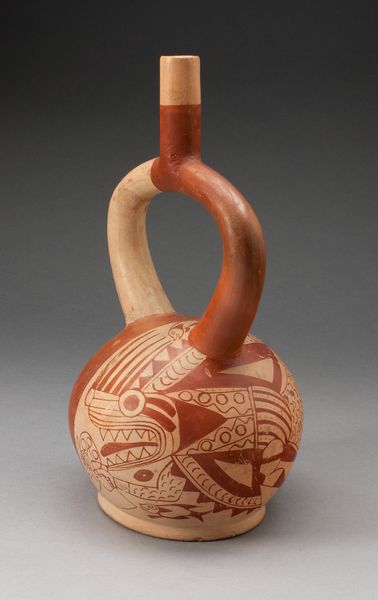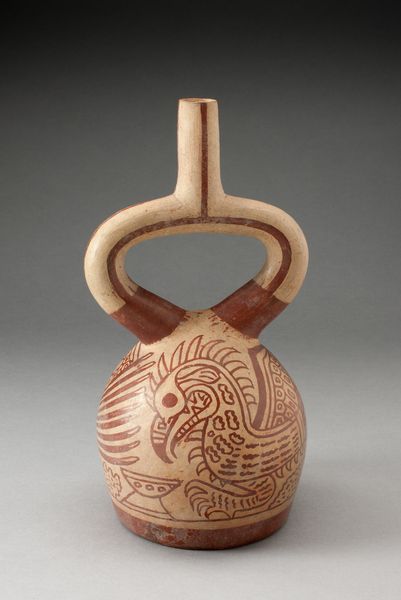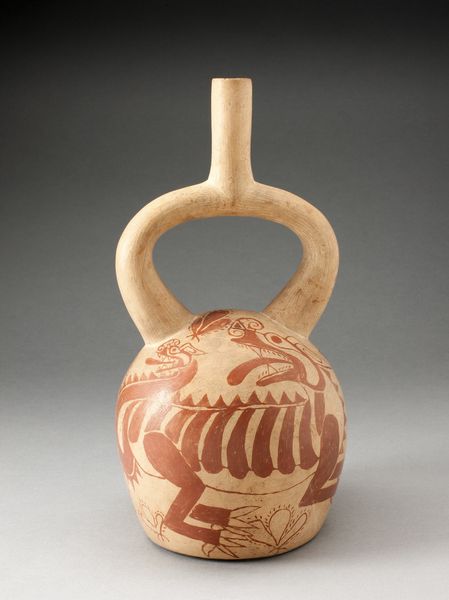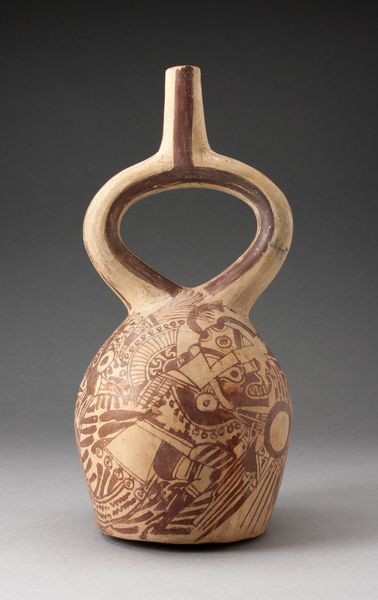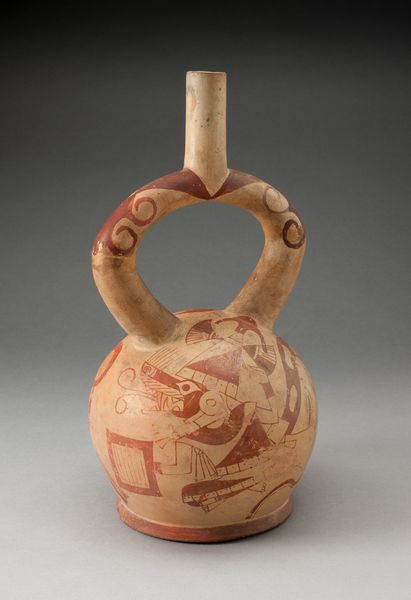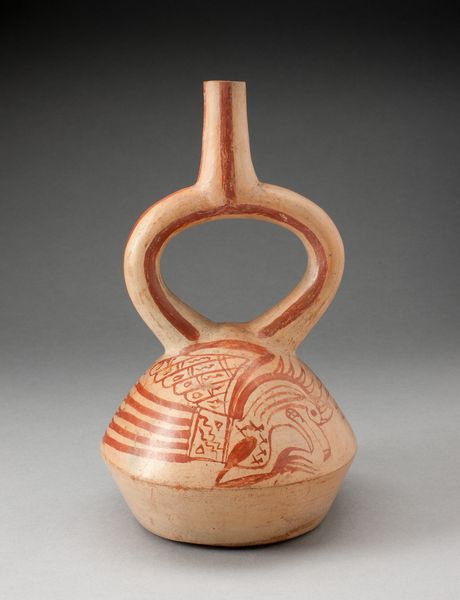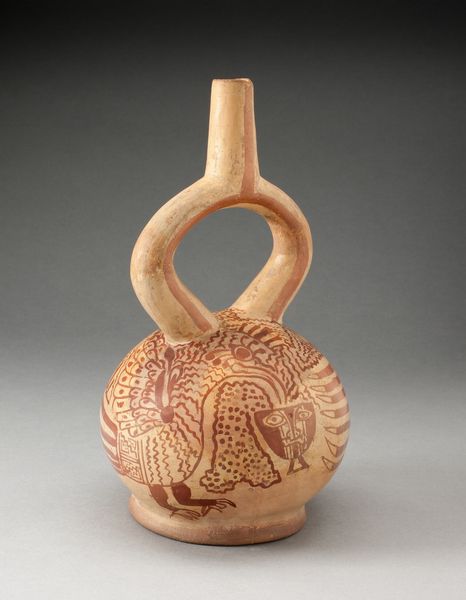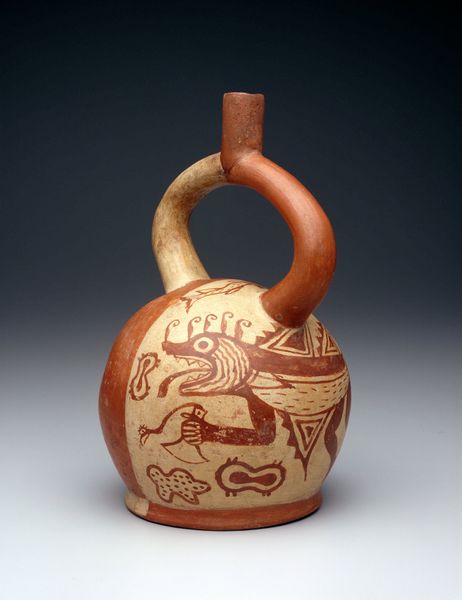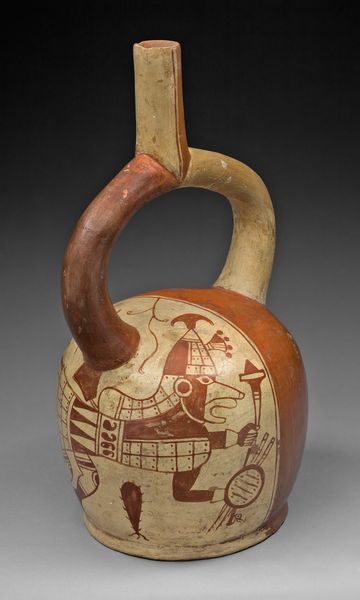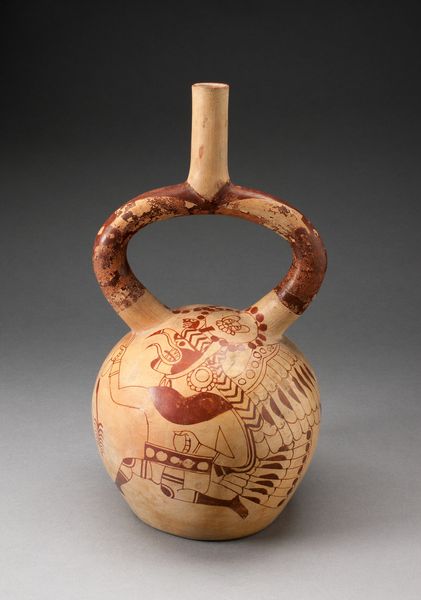
Stirrup Vessel Depicting Anthropomorphic Fish, with Overpainting c. 100 - 500
0:00
0:00
ceramic
#
ceramic
#
figuration
#
form
#
ceramic
#
indigenous-americas
Dimensions: H. 30.2 cm (11 7/8 in.)
Copyright: Public Domain
Curator: Well, what do you think of this piece? It's titled "Stirrup Vessel Depicting Anthropomorphic Fish, with Overpainting," created by the Moche people, likely sometime between 100 and 500 AD. You can find it here at the Art Institute of Chicago. Editor: Immediately, I’m struck by a feeling of playful solemnity. It's a vessel, so there's a functionality implied, yet that stirrup handle and the creature depicted on the body elevate it beyond mere utility. The terracotta color is lovely. Curator: The stirrup shape is quite distinctive, isn't it? Almost as if the vessel itself is some sort of mythical steed. I imagine it's so the contents don't spill too easily. I mean who knows? It could've held anything from water, to chicha or even blood? Editor: Exactly, and I think the form, the visual signifier, overrides any functional reading. Looking closer at the fish, those aren't scales but stylized designs! Is it holding a tumi? All these patterns…they're not just decoration, they must encode specific meanings, ancestral narratives perhaps. I almost get a totem animal sort of vibe here. What kind of fish is it, and what meaning might this particular sea creature have had in Moche culture? It all looks to be done in ceramic too! Curator: Precisely! Ceramics were often imbued with symbolic weight, serving not only practical purposes but also ritualistic ones. It is not quite like the Grecian Urns of that era. We should keep in mind this came from Peru. I would hazard a guess the vessel served a ceremonial use in a funerary rite. The shape could represent the life of a person in question. But then again I am no expert in anthropology. Editor: And I'm definitely no archeologist! Yet the form reminds me of ancient Mediterranean oil flasks, and perhaps this speaks to a human drive toward visual encoding when creating even basic household objects. Now to see it covered in symbols of an almost deity. Is this the artist's subconscious coming to life? Or the community's way of paying homage? Curator: Well, regardless, it sparks questions and connections across time and cultures, and I like how you touched upon both its symbolic depth and the common thread of human artistry, wherever it springs. Editor: Agreed! The playful solemnity and the stirrup steed that sprang into mind when first viewing this Moche master work still hold strong. There is just something comforting, maybe homely? Who knows, I might be projecting a bit.
Comments
No comments
Be the first to comment and join the conversation on the ultimate creative platform.
